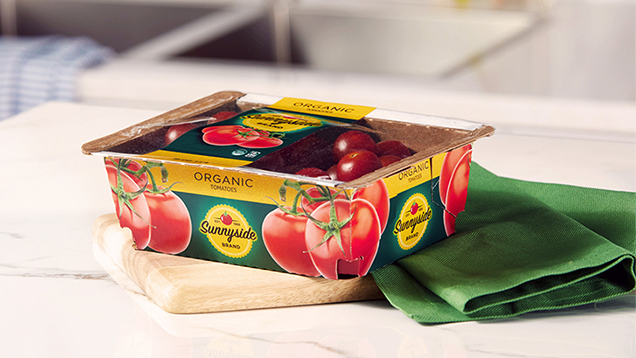Jackie D’Ambrosio, senior manager, business development at Graphic Packaging, explores the benefits of cartonboard in keeping tomatoes fresh
CONSUMER preference for more environmentally responsible packaging, evolving corporate sustainability goals, and tightening regulatory restrictions are driving an evolution in fresh produce packaging from plastic to cartonboard alternatives.
At Graphic Packaging, many of our partners in the produce sector are increasingly aware of this. We are often asked by our customers whether our cartonboard produce solutions can offer an equivalent shelf-life to their existing plastic solutions, ensuring they can transition away from plastic as smoothly as possible.
Why transition from plastic to cartonboard?
Cartonboard packaging is the most recycled packaging material in the world, with a recycling rate of 79.3% in Europe. With retailers, brands, and legislators implementing targets around packaging recyclability — including Extended Producer Responsibility (EPR), which will see producers become liable for the costs of waste management — packaging recyclability and design for recycling (DfR) principles are important within the fresh produce sector. Cartonboard is made from renewable wood-based fibre from sustainably managed forests so also contributes to the circular economy.
From a consumer perspective, studies have shown that the majority (87%) prefer paper-based packaging, and more than three-quarters (76%) believe they make a positive contribution to the environment by choosing cartonboard packaging. Alternatives to plastic packaging must still be fit for purpose. For applications like fresh produce, packaging must protect delicate items and offer a shelf life that’s at least equivalent to plastic.
According to UN data, roughly one-third of all food produced globally is wasted, creating a much larger environmental impact than plastic waste. Just one kilogram of landfilled food waste generates the same carbon emissions as 25,000 plastic bottles.
Therefore, it’s crucial that cartonboard packaging performs on par with plastic.
We had already received feedback from eight tomato growers who had performed shelf-life tests on one of our most popular fresh produce packaging solutions, the ProducePack Punnet tray, which confirmed that it did indeed offer an equivalent shelf-life to traditional plastic punnet trays. Some even reported that the cartonboard punnet tray offered better results than plastic trays. We knew it was important to confirm these findings with an independent test, so we asked Washington State University to help us.
Methodology
The objective was to compare the shelf-life of grape and cherry tomatoes packed in plastic and cartonboard punnet trays and each tray type was to be tested in ambient and chilled conditions. The study analysed 750 punnets of both grape and cherry tomatoes, with half of each packed in cartonboard punnet trays and the other half in plastic punnets.
The packs were kept in a cooler for four days before half were removed and kept at ambient temperature. The tomatoes were tested for softness, weight, wrinkling, and the presence of mould every other day.
The headline finding was that we saw significantly less mould growth on the tomatoes packed in cartonboard punnets.
The results showed:
• Mould growth on cherry tomatoes in plastic was 61% higher than in cartonboard in refrigerated conditions and 320% higher at room temperature
• Mould growth occurred earlier in plastic versus cartonboard punnets
What does it mean?
The results confirmed that the cartonboard punnets offered at least an equivalent shelf-life for tomatoes, and superior results to plastic in some cases. Although the relative humidity (RH) inside the punnets wasn’t measured, we inferred the RH inside the cartonboard punnets was lower than in the plastic punnets as they lost a greater amount of weight over the test period in all cases. It was concluded that the cartonboard’s permeability, combined with the ventilation holes, allowed moisture and gases to escape, resulting in lower RH.
As the packaging industry continues to evolve at pace, cartonboard innovations like ProducePack could be the solutions that shape the future of the fresh produce aisle.














